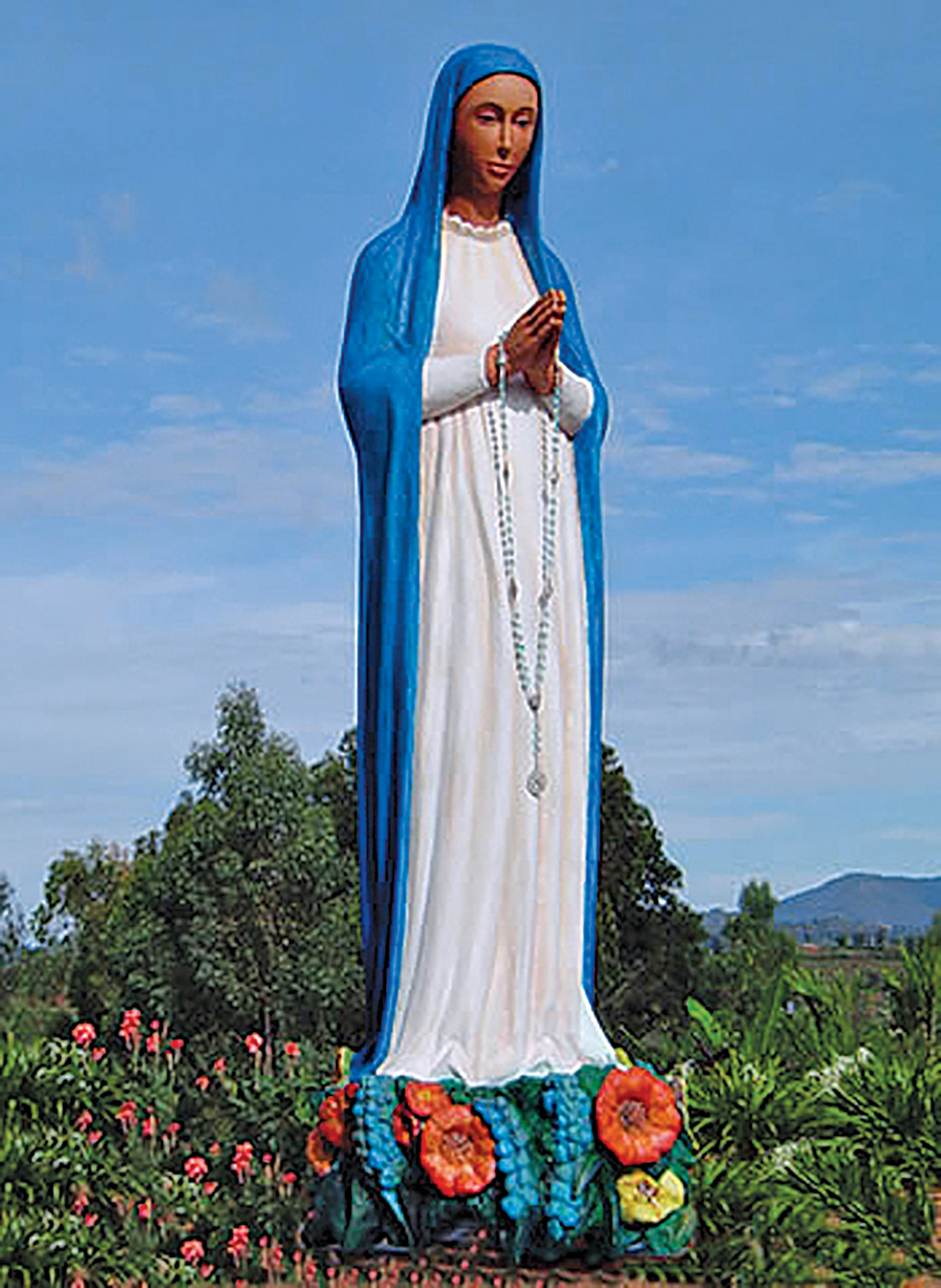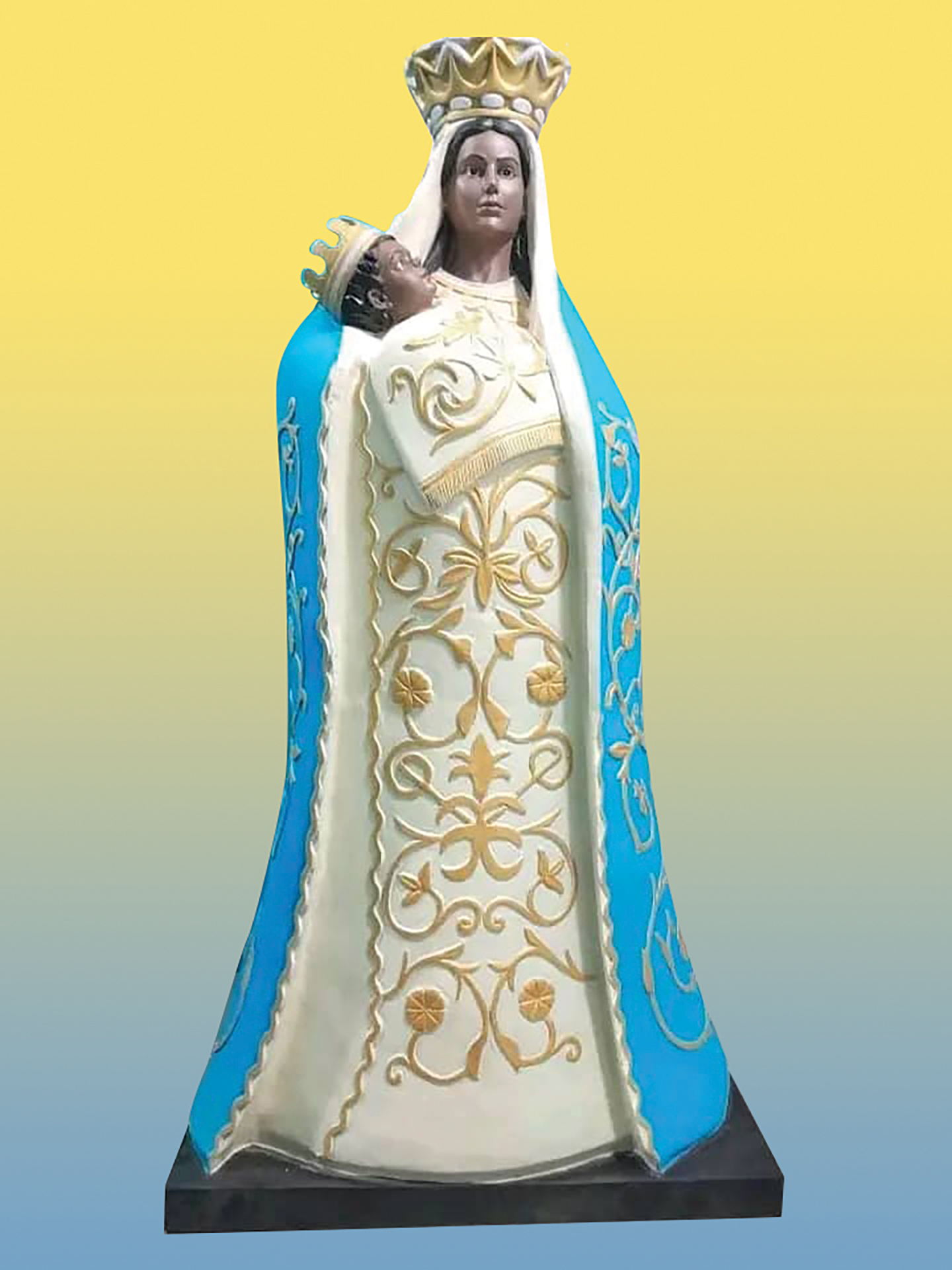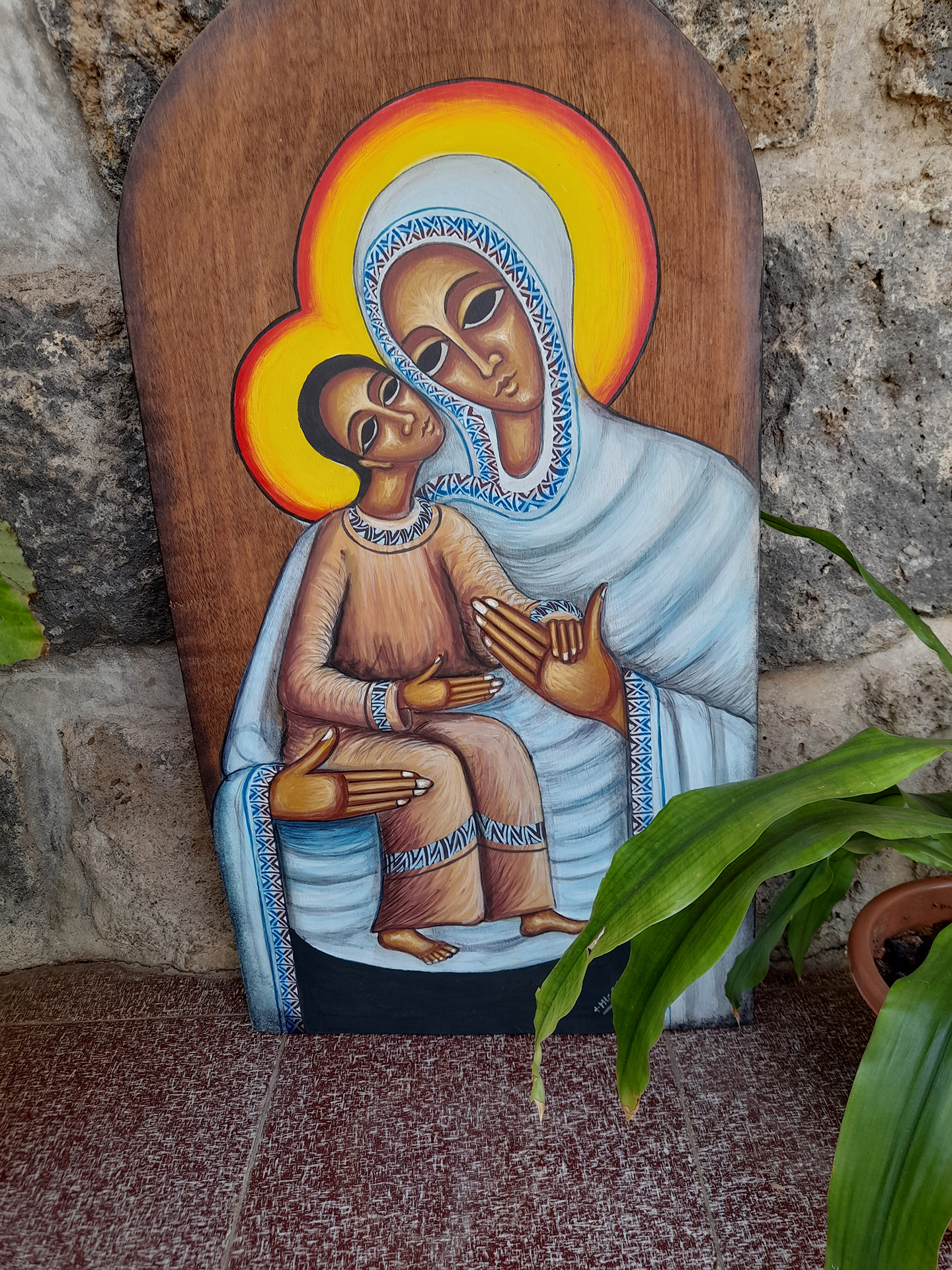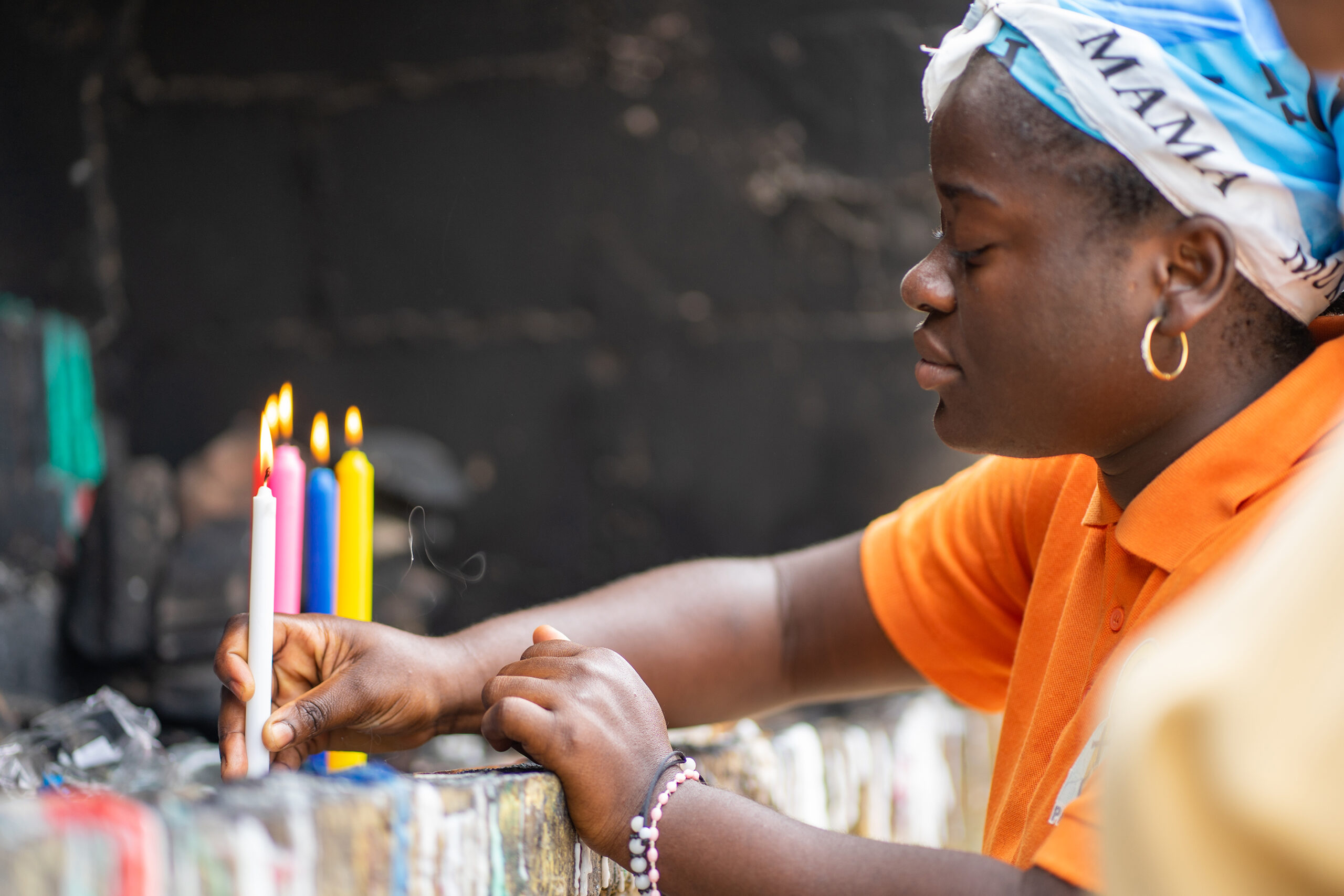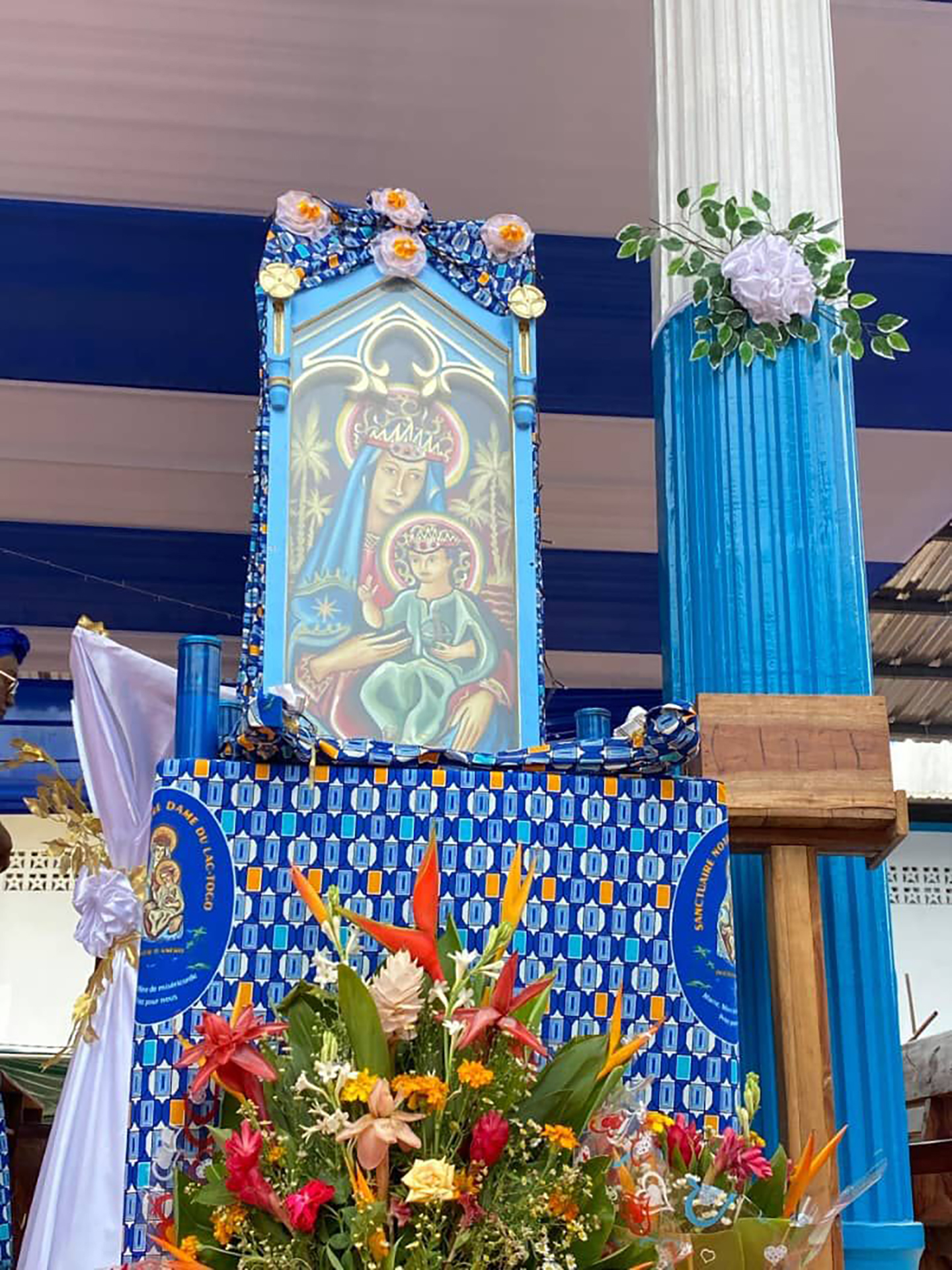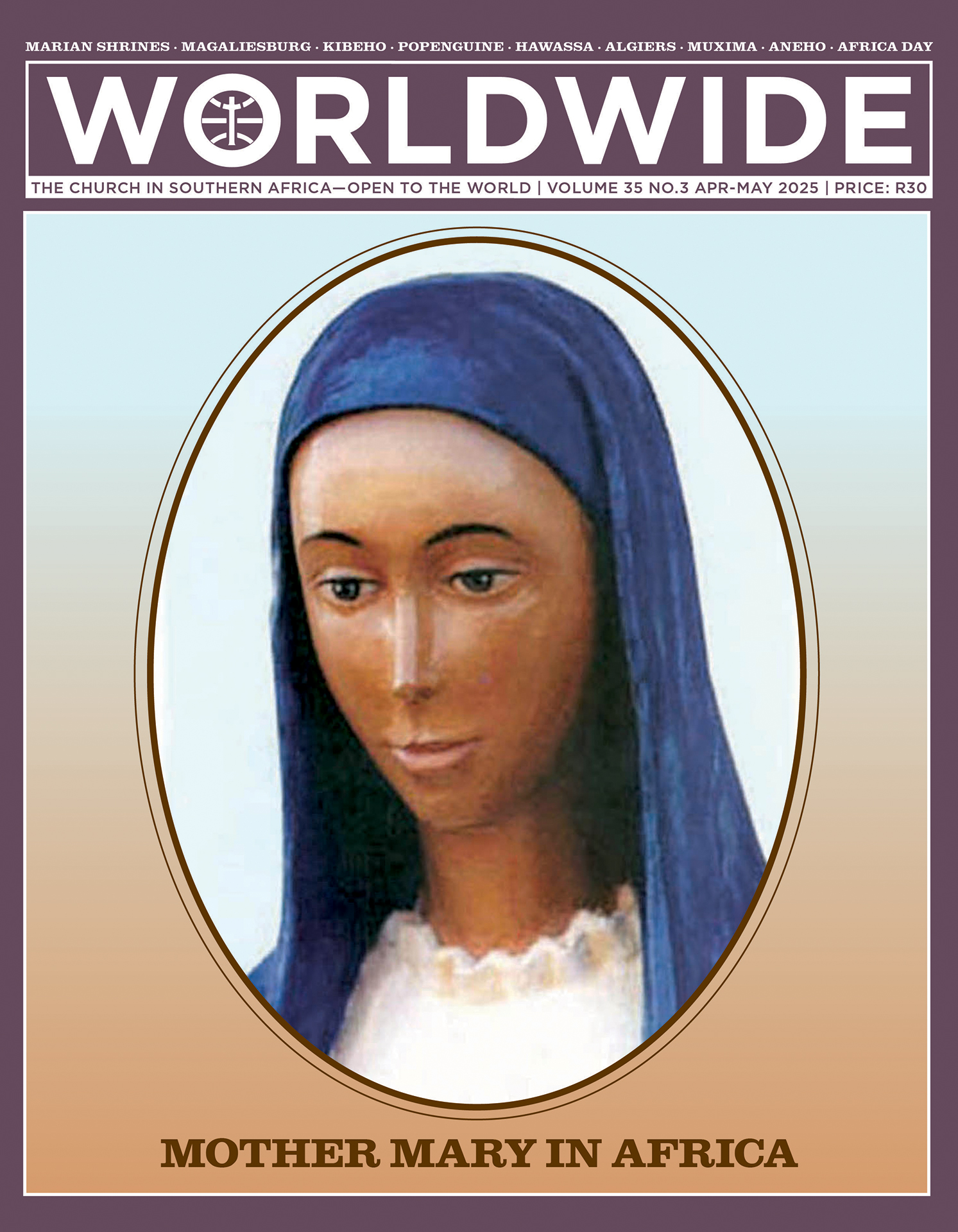
MOTHER MARY IN AFRICA
Head of the Statue of Mother Mary at Kibeho, Rwanda, carved by Marek Kowalski and based on the models of Jean Pierre Sibomana and Faustin Kayitana. In the statue, Mother Mary holds the Seven Sorrows Chaplet, a Marian devotion reintroduced to the Catholic community by Our Lady of Kibeho.
Kibeho is the only Marian apparition on African soil, officially recognized by the Church. Mother Mary’s requests for prayers preluded the 1994 Genocide.
SPECIAL REPORT • ALGIERS-ALGERIA
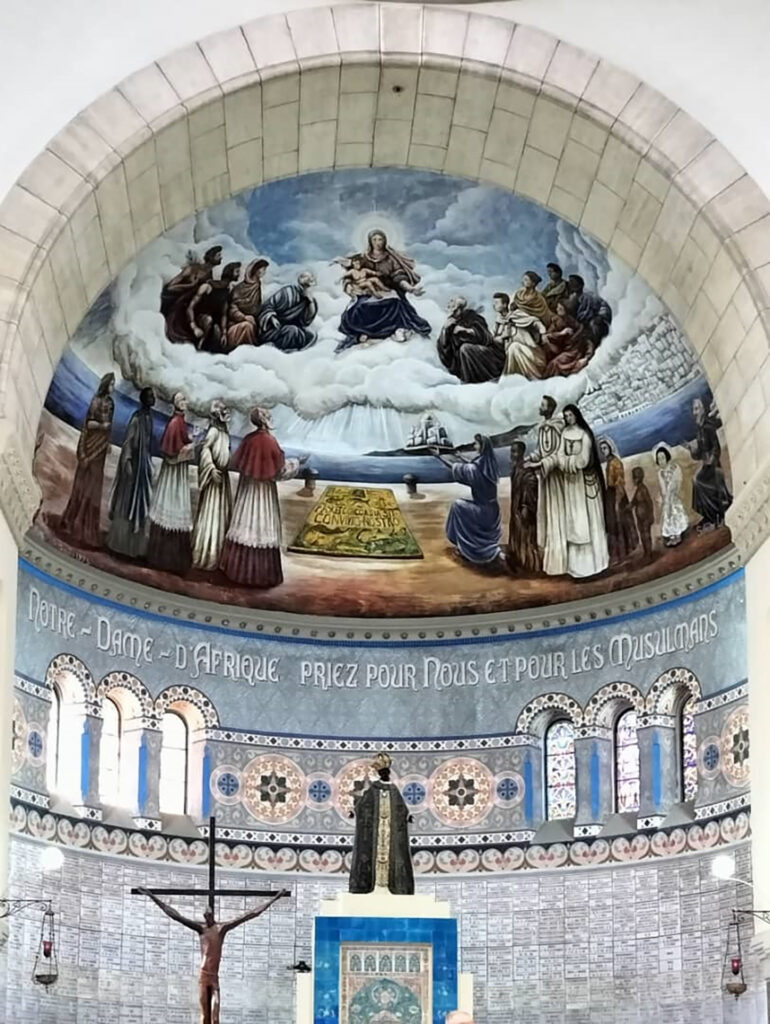
THE BASILICA NOTRE DAME D’AFRIQUE A PLACE FOR CHRISTIAN-MUSLIM DIALOGUE
The article illustrates the significance of the Basilica of Notre Dame D’ Afrique (Our Lady of Africa) for Christian-Muslim dialogue in Algeria. The author brings to the fore the particularity of the Catholic Church in the Muslim milieu and discusses the significance of the figure of Mary in the Catholic-Muslim dialogue.
BY FR JONES KAWISHA, M. AFR. | ST JOSEPH THEOLOGICAL INSTITUTE, CEDARA, KZN
THE BASILICA of Notre Dame D’Afrique is situated in the northern part of Algeria, in the archdiocese of Algiers. It was completed in 1872, when Cardinal Charles Lavigerie—founder of the Society of Missionaries of Africa and of the Missionary Sisters of Our Lady of Africa—was the archbishop of Algiers. Today, it is still under the care of the Missionaries of Africa. In the Basilica, we find the inscription “Notre Dame D’Afrique priez pour nous et pour les musulmans,” or, in English, “Our Lady of Africa, pray for us and the Muslims”. From a Christian perspective, this portrays Mary as the intercessor for Christians and, indeed, for all of humanity.
The Presence of the Church in Algeria
The Archdiocese of Algiers consecrates itself to a particular way of Evangelization: the dialogue with Muslims. Evangelization is the deepest identity of the Church (EN 14). Different documents of the Church have discussed interreligious dialogue as part and parcel of the Church’s evangelizing mission (RM 55). It is a way of being Church or of living Christian love, which does not limit itself to a particular race, religion, culture, or place.
The mission of the Church in Algeria is not to convert Muslims to Christianity but to promote friendship and peaceful coexistence between Catholics and Muslims.
The Catholic Church in the Muslim milieu must be understood from this Christian perspective; the Church in Algeria must be understood as living her mission as the sacrament of encounter and unity (LG 1), the sacrament of reconciliation (LG 1), and the seed, sign, and instrument ordered towards the kingdom of God (RM 18). Teissier (1985:96) stresses that the fact of the Church being a sacrament indicates that she is not a finality in herself. She is a sign and agent of God’s interaction with humanity. In this sense, we agree with Teissier that the Church’s vocation goes beyond the boundaries of her daughters and sons and ultimately extends to humanity in its entirety.
We must emphasize beyond reasonable doubt that the mission of the Church in Algeria is not to convert Muslims to Christianity but to promote friendship and peaceful coexistence between Catholics and Muslims. This outlook stems from the Christian understanding of the universality of God’s love and from an ecclesiological understanding of the Church as a sacrament. Consequently, interreligious dialogue is the Church’s very nature or specificity. Christ’s love must be lived both ad intra and ad extra ecclesiam since the Church is the sacrament of God. Hence, we would argue that a Church is meaningful only when she participates and perpetuates Christ’s universal love, even for different religious communities.
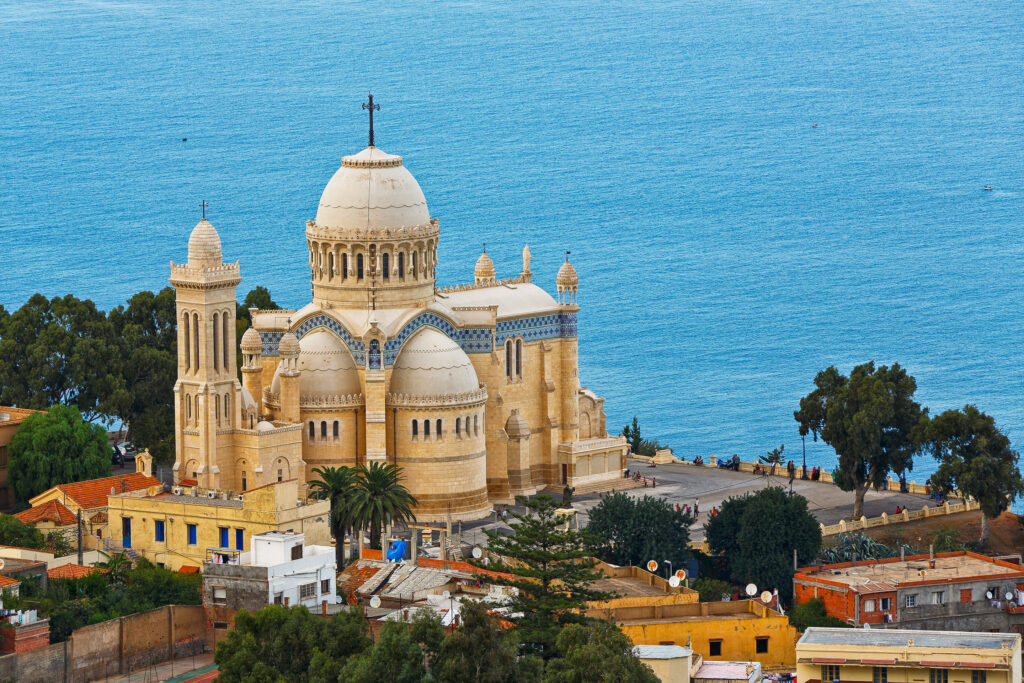
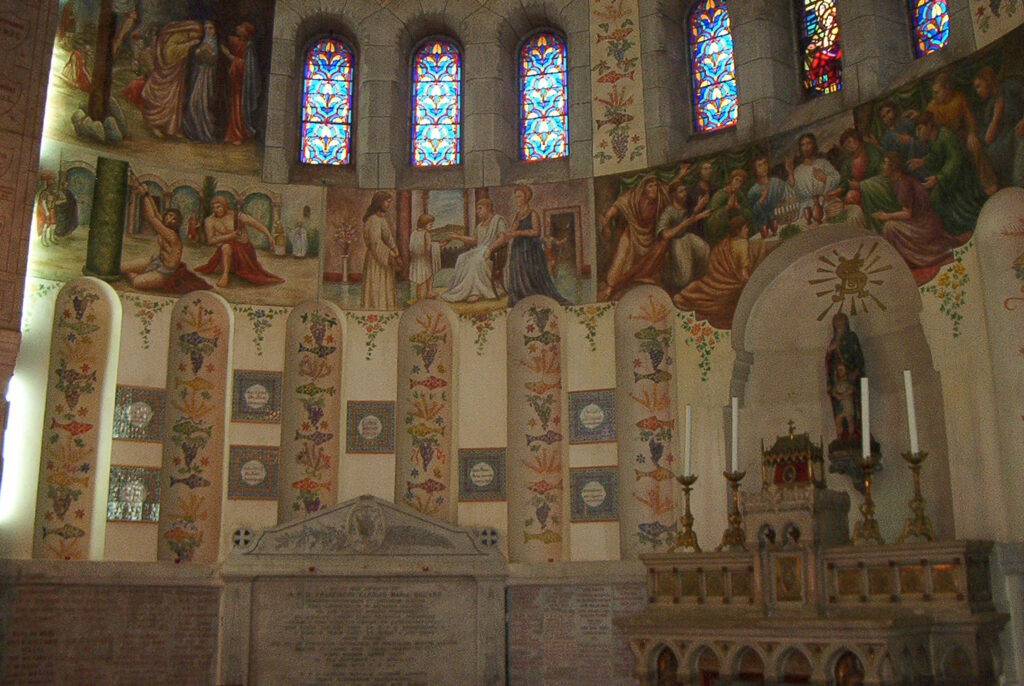
The Emeritus Archbishop of Rabat, His Grace Vincent Louis Marie Landel, pinpointed that “For us, Christians in North Africa, we receive the Lord’s invitation to be ‘sent into the world’, to be just simply this presence of friendship, of respect and welcome, able to live in truth this encounter as a ‘sign of God’s tenderness for his people’” (McGee 2015:21).
Mary as a model figure in the Catholic-Muslim Dialogue
Christian-Muslim dialogue can be promoted in different ways. In the case of the Basilica Notre Dame D’Afrique, Mary promotes Christian-Muslim fraternal communion, respect and spiritual interaction. It is important to note that Mary holds a special place of honor in both the Catholic Church and in Islam, although the two religions have different theological understandings of the vocation and theological significance of Mary.
The Quran portrays a beautiful image of Mary. She is depicted as an exemplary woman and the mother of Jesus.
In Islam, the Holy Quran consecrates an entire Surah to Mary (the Surah Maryam). Broadly speaking, the Christian world is not aware of the fact that the Quran portrays a beautiful image of Mary. She is depicted as an exemplary woman and the mother of Jesus. Thus, she is a figure of devotion for Muslims, especially women. This illustrates the importance of the Basilica Notre Dame D’Afrique in Algeria.
Muslim women visit the Basilica daily. They come, not in the interests of tourism or pleasure, but to pray and occasionally give thanks for different reasons. Visiting the Basilica, you will find on its walls written witnesses by Algerian Muslim women, such as “I thank N.D.A for the healing of my children” or “I thank N.D.A for the success of my son’s exams.”
On the website of the Basilica it is stated that the theological arguments that foster mutual respect and harmony between Islam and Christianity are sought after by scholars of both religions. However, the simplicity of the hearts of ordinary believers naturally brings them all to Mary’s house, Madam Africa, to offer their thanks or prayers to God. The Basilica walls bear witness to this zeal, and demonstrate the faith of the lowly, who join Mary in prayer to God (Cf: Notre Dame D’Afrique).
The above-mentioned descriptions of reverence for Mary demonstrate that the Basilica is a place of Marian devotion for Muslims and Christians alike, including men and women from grassroots level. Despite the differences in understanding and explanation, Mary is a unifying figure for Christians and Muslims, for people with simplicity of the heart. Hence devotion to her has implications for the Christian-Muslim relationship. It promotes peaceful existence and human fraternity between Muslims and Christians, because this devotion signals a profound spiritual encounter among members of the two religions that goes beyond their theological or dogmatic differences and promotes a deep sense of human fraternity and communion.
Promoting fraternity
The Basilica has organized different activities to promote Catholic-Muslim dialogue around Mary. Since 2016, for example, the Islam-Christian Marian Day (Journée Mariale Islamo-Chrétienne (JMIC)) has been an annual event. The aim of this Marian Day is to “promote dialogue, peace and fraternity between Christians and Muslims. It is founded on the conviction that Christians and Muslims are brothers (sic) and that together they can value peace and understanding between men and women of all cultures, languages, peoples, and notions.” (Cf: Notre Dame D’Afrique).
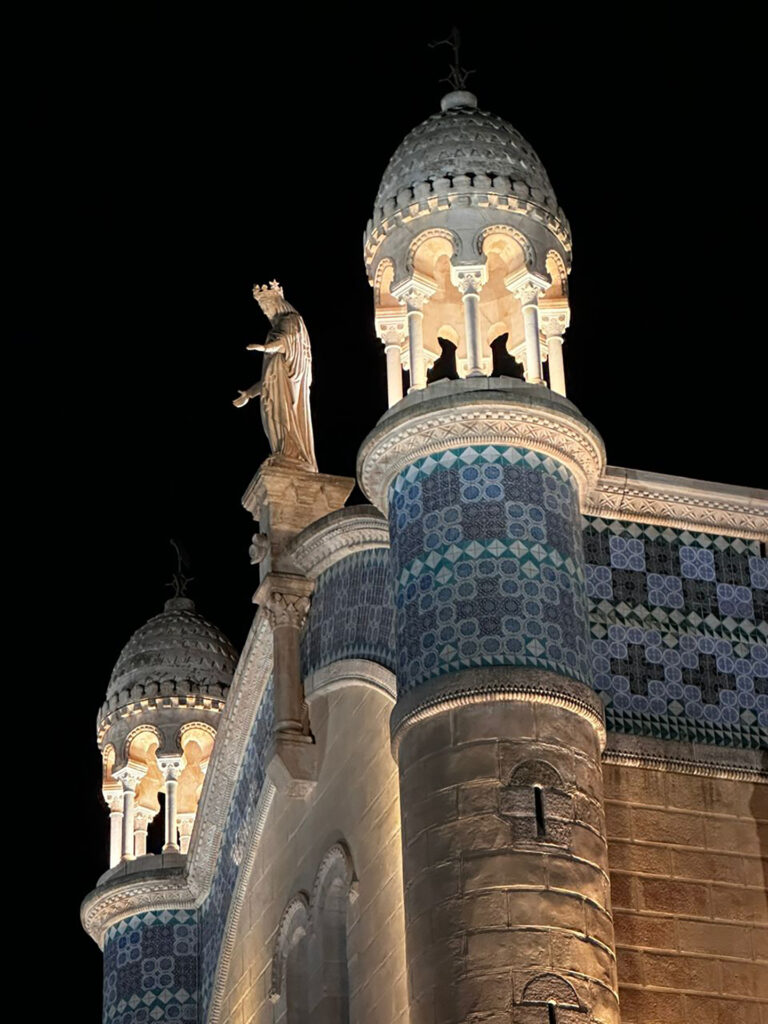
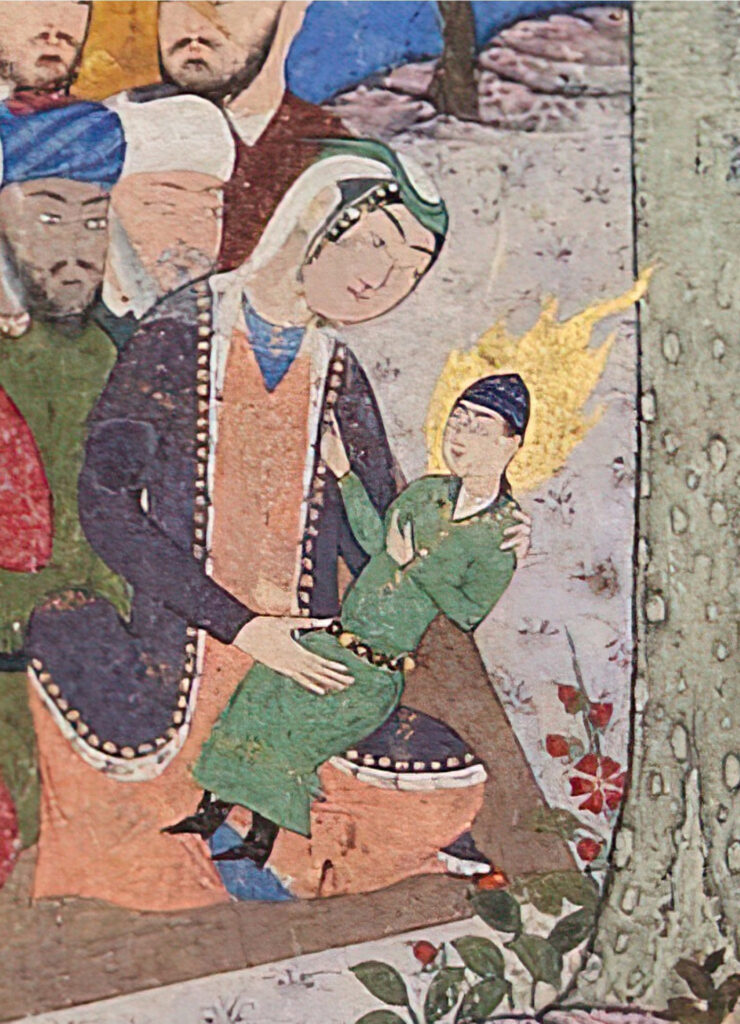
This celebration is attended by many people from the two religions, and includes religious figures (imams and priests), and people of goodwill invited to participate. Different topics (with special reference to Mary) that promote Christian-Muslim dialogue are discussed. A couscous meal, referred to as “Marian couscous,” is shared. The sharing of a meal is a sign of human communion.
The Basilica is a place of Marian devotion for Muslims and Christians alike, including men and women from grassroots level.
Also, a Marian prayer was composed in 2022, celebrating the 150 years of the Basilica. In its final lines it says, “Our Lady of Africa, we ask you, especially, to pray so that Christians and Muslims live in fraternity.”
Notre Dame Afrique, sometimes called Madam Africa, is not only the protectress of Africa but also leads children of diverse cultures, races, languages, and religions to universal fraternity and peaceful coexistence.
The Basilica stands out as the place for genuine Christian-Muslim dialogue in the light of Mary’s maternal care. Simply stated, it is a place of Christian presence that welcomes and respects the Muslim presence in its shared devotion to Mary.
For Christians, it is a way of expressing their faith. Zizioulas argues that when a person joins the Church, he or she immediately adopts God’s way of being. That manner of being dictates how the person relates with God, with others, and with the world. Therefore, the Church is an event of communion (Hunt: 2005:45). Hence, at Notre Dame D’Afrique, Christians live their specificity through communion with Muslims around the figure of Mary.

